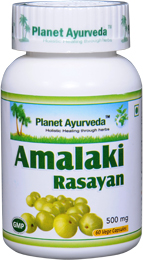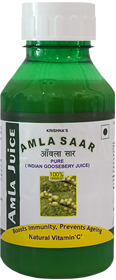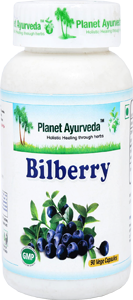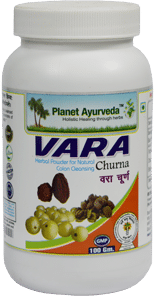About Cataract
A Cataract is a common eye disease that occurs usually in older age. It occurs when proteins buildup on the lens which in turn makes it cloudy. Clouding of the lens prevents light from passing clearly through the lens and hence affects the vision.
Types of Cataracts
There are three types of cataract which are explained below:
Subcapsular cataract:
This type of cataract occurs at the back of the lens. A person suffering from diabetes or taking steroid medications in high doses, is at higher risk of developing this type of cataract.
Nuclear Cataract:
This type of cataract is usually associated with aging. It occurs deep in the central zone of the eye lens.
Cortical cataract:
A Cortical cataract occurs in the lens cortex, a part that surrounds the central nucleus.
Symptoms of Cataract
Common symptoms of all types of cataracts are listed below:
- Eyes become sensitive to light.
- Vision becomes blurred day by day.
- Difficulty in focusing objects properly.
- Double vision may be noticed.
- Optical glasses are needed for reading.
- Pupils become milky white in color day by day.
What is the Cause of Cataract?
The lens inside our eye works like a camera lens by focusing the light onto the retina. The lens is made up of water and protein. The protein is arranged in such a manner that keeps the lens clear, letting us see things clearly. But in advancing age, some of the protein may clump together and hence start to cloud the lens. This is known as a cataract. As we age, it decreases the vision.
Risk Factors for Cataract
Besides advancing age, there are several other risk factors for cataract which are listed below:
- Sun’s ultraviolet radiations.
- Diabetes, hypertension, obesity.
- Smoking, family history.
- Excessive use of corticosteroid medications.
- Eye injury or eye surgery.
- Excessive Alcohol consumption.
- High myopia and hormone replacement therapy.
Diet for Health Eyes
Fruits and vegetables rich in antioxidants are good for people suffering from cataract. Diet rich in vitamin E decreases the risk of developing cataract. Sunflower seeds, almonds and spinach are the best sources of vitamin E. Diet rich in carotenoids (Lutein and zeaxanthin) is also good for cataract patients. Spinach, kale and other green, leafy vegetables are some of the best sources of lutein and zeaxanthin. Foods containing omega 3 fatty acids and Vitamin C rich foods are also responsible for reducing the risk of cataract.
Ayurvedic Approach to Cataract
Cataract is known as “Linganaasha or Timira”, in Ayurveda. Ayurveda is an ancient healthcare system that maintains a healthy body by balancing all the doshas of our body. These doshas are considered as the forces or energies of our body. There are three doshas, Vata dosha, Pitta dosha, and Kapha dosha.
The main cause of cataract, according to Ayurveda, is the aggravation of Vata dosha. Due to the imbalance in Vata dosha, eye lens loses its moisture, which in turn dries up of an eye ball. Due to this, eye lens becomes opaque.
Herbal Remedies for Cataract
Planet Ayurveda offers effective herbal remedies like Amalaki Rasayan, Amla Saar, Bilberry Capsules & Vara Churna for ayurvedic treatment of cataract. Planet Ayurveda provides 100 percent pure and natural products. All of them are free from side effects and are safe to use. And they are formulated by MD Ayurveda doctors. All of the medicines from the house are made without the addition of chemicals or additives or preservatives in it.
1. AMALAKI RASAYAN
These are pure natural herbal capsules which are obtained from extract of Indian Gooseberry (Emblica officinalis). It is the richest source of vitamin C. It is natural and safe and best anti-aging substance.
USES:
- It has anti-oxidant properties which helps to remove free radicals from body.
- These are helpful in improving eyesight.
- It helps to reduce inflammation of eyes.
DOSE: 2 Capsules twice a day.
2. AMLA SAAR
It is Indian Gooseberry Juice which is made from Emblica officinalis (Amla). It is best herbal formulation as per Ayurvedic text, Charak Samhita.
USES:
- It helps to maintain overall health.
- It enhances eyesight.
- It has antioxidant properties which helps to remove toxins from body.
DOSE: Mix equal amount of amla saar and water and consume it twice in a day.
3. BILBERRY CAPSULES
These are pure natural capsules by planet Ayurveda which are obtained from pure herb named as Bilberry (Vaccinium myrtillus). Bilberry is also known as Whortleberry and blueberry.
USES:
- It has wonderful effect on eyes.
- It has anti-oxidant properties.
- It improves blood circulation in all parts of body.
DOSE: 2 capsules with milk or water after meals.
4. VARA CHURNA
It is an herbal powder. It is also known as Triphala powder, is made up of three natural herbs Haritaki (Terminalia chebula), Bhibhitaki (Terminalia bellerica) and Amalaki (Emblica officinalis). These three herbs together known as Myrobalans. It is effective against various diseased conditions.
Ingredients and their Uses:-
- Haritaki (Terminalia chebula): It is commonly used herb in India which is useful in relieving constipation. It helps to improve digestive problems. Its regular use is helpful in reducing cloudiness of eye lens.
- Bibhitaki (Terminalia bellerica): Its paste is useful in relieving conjunctivitis.
- Amalaki (Emblica officinalis): It is commonly known as Indian Gooseberry. It is richest source of vitamin C. It is helpful in various ailments. Its regular use maintains the transparency of eye lens.
DOSE: 1 teaspoonful mix with warm water and consume it twice in a day.
Suggestions
With the help of healthy and balanced diet one can prevent themselves from cataract. There are some diet guidelines to prevent cataract which are given below:
- Bitter and sour foods should be avoided like pickle, sauce, strong tea and coffee.
- Take vitamin C, A and E rich diet.
- Cow’s milk and milk products are beneficial.
- Take Fruits like pomegranate, orange, apples, bananas
- Vegetables like spinach, ladyfinger and fenugreek should be included in diet.
- Avoid direct contact with toxic chemicals, X-Rays, IR rays.
- Regular eye checkup is advised.




